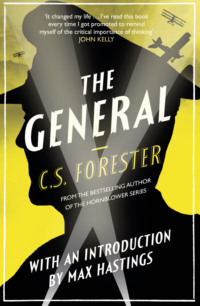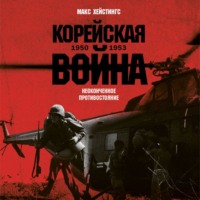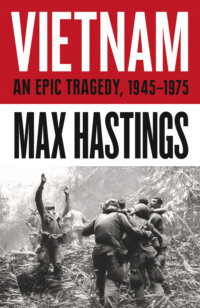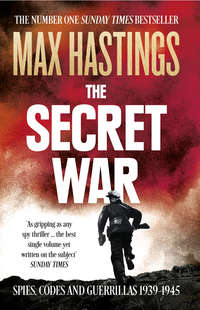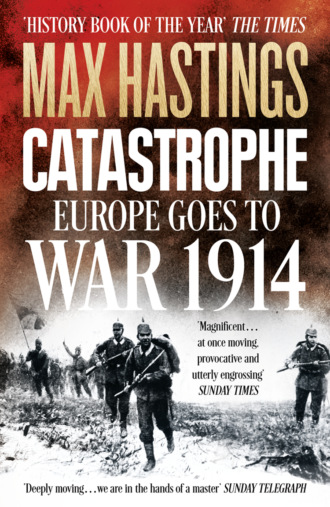
Полная версия
Catastrophe: Europe Goes to War 1914
The outbreak has been justly described as the most complex series of happenings in history, much more difficult to comprehend and explain than the Russian Revolution, the onset of World War II or the Cuban missile crisis. This part of the story is inevitably that of the statesmen and generals who willed it, of the rival manoeuvres of the Triple Alliance – Germany and Austria-Hungary with Italy as a non-playing member – against the Triple Entente of Russia, France and Britain.
In today’s Britain, there is a widespread belief that the war was so horrendous that the merits of the rival belligerents’ causes scarcely matter – the Blackadder take on history, if you like. This seems mistaken, even if one does not entirely share Cicero’s view that the causes of events are more important than the events themselves. That wise historian Kenneth O. Morgan, neither a conservative nor a revisionist, delivered a 1996 lecture about the cultural legacy of the twentieth century’s two global disasters, in which he argued that ‘the history of the First World War was hijacked in the 1920s by the critics’. Foremost among these was Maynard Keynes, an impassioned German sympathiser who castigated the supposed injustice and folly of the 1919 Versailles Treaty, without offering a moment’s speculation about what sort of peace Europe would have had if a victorious Kaiserreich and its allies had been making it. The contrast is striking, and wildly overdone, between the revulsion of the British people following World War I, and their triumphalism after 1945. I am among those who reject the notion that the conflict of 1914–18 belonged to a different moral order from that of 1939–45. If Britain had stood aside while the Central Powers prevailed on the continent, its interests would have been directly threatened by a Germany whose appetite for dominance would assuredly have been enlarged by victory.
The seventeenth-century diarist John Aubrey wrote: ‘About 1647, I went to see Parson Stump out of curiosity to see his Manuscripts, whereof I had seen some in my childhood; but by that time they were lost and disperst; his sons were gunners and souldiers, and scoured their gunnes with them.’ All historians face such disappointments, but the contrary phenomenon also afflicts students of 1914: there is an embarrassment of material in many languages, and much of it is suspect or downright corrupt. Almost all the leading actors in varying degree falsified the record about their own roles; much archival material was destroyed, not merely by carelessness but often because it was deemed injurious to the reputations of nations or individuals. From 1919 onwards Germany’s leaders, in pursuit of political advantage, strove to shape a record that might exonerate their country from war guilt, systematically eliminating embarrassing evidence. Some Serbs, Russians and Frenchmen did likewise.
Moreover, because so many statesmen and soldiers changed their minds several times during the years preceding 1914, their public and private words can be deployed to support a wide range of alternative judgements about their convictions and intentions. An academic once described oceanography as ‘a creative activity undertaken by individuals who are … gratifying their own curiosity. They are trying to find meaningful patterns in the research data, their own as well as other people’s, and far more frequently than one might suppose, the interpretation is frankly speculative.’ The same is true about the study of history in general, and that of 1914 in particular.
Scholarly argument about responsibility for the war has raged through decades and several distinct phases. A view gained acceptance in the 1920s and thereafter, influenced by a widespread belief that the 1919 Versailles Treaty imposed unduly harsh terms upon Germany, that all the European powers shared blame. Then Luigi Albertini’s seminal work The Origins of the War of 1914 appeared in Italy in 1942 and in Britain in 1953, laying the foundations for many subsequent studies, especially in its emphasis on German responsibility. In 1961 Fritz Fischer published another ground-breaking book, Germany’s War Aims in the First World War, arguing that the Kaiserreich must bear the burden of guilt, because documentary evidence showed the country’s leadership bent upon launching a European war before Russia’s accelerating development and armament precipitated a seismic shift in strategic advantage.
At first, Fischer’s compatriots responded with outrage. They were members of the generation which reluctantly accepted a necessity to shoulder responsibility for the Second World War; now, here was Fischer insisting that his own nation should also bear the guilt for the First. It was too much, and his academic brethren fell upon him. The bitterness of Germany’s ‘Fischer controversy’ has never been matched by any comparable historical debate in Britain or the United States. When the dust settled, however, a remarkable consensus emerged that, with nuanced reservations, Fischer was right.
But in the past three decades, different aspects of his thesis have been energetically challenged by writers on both sides of the Atlantic. Among the most impressive contributions was that of Georges-Henri Soutou, in his 1989 work L’Or et le sang. Soutou did not address the causes of the conflict, but instead the rival war aims of the allies and the Central Powers, convincingly showing that rather than entering the conflict with a coherent plan for world domination, the Germans made up their objectives as they went along. Some other historians have ploughed more contentious furrows. Sean McMeekin wrote in 2011: ‘The war of 1914 was Russia’s war even more than it was Germany’s.’ Samuel Williamson told a March 2012 seminar at Washington’s Wilson Center that the theory of explicit German guilt is no longer tenable. Niall Ferguson places a heavy responsibility on British foreign secretary Sir Edward Grey. Christopher Clark argues that Austria was entitled to exact military retribution for the murder of the Archduke Franz Ferdinand upon Serbia, which was effectively a rogue state. Meanwhile John Rohl, magisterial historian of the Kaiser and his court, remains unwavering in his view that there was ‘crucial evidence of intentionality on Germany’s part’.
No matter – for the moment – which of these theses seems convincing or otherwise: suffice it to say there is no danger that controversy about 1914 will ever be stilled. Many alternative interpretations are possible, and all are speculative. The early twenty-first century has produced a plethora of fresh theories and imaginative reassessments of the July crisis, but remarkably little relevant and persuasive new documentary material. There is not and never will be a ‘definitive’ interpretation of the coming of war: each writer can only offer a personal view. While I make plain my own conclusions, I have done my best to rehearse contrary evidence, to assist readers in making up their own minds.
Contemporary witnesses were as awed as are their twenty-first-century descendants by the immensity of what befell Europe in August 1914 and through the months and years that followed. Lt. Edward Louis Spears, British liaison officer with the French Fifth Army, reflected long afterwards: ‘When an ocean liner goes down, all on board, great and small alike, struggle with equal futility and for about the same time, against elements so overwhelming that any difference there may be in the strength or ability of the swimmers is insignificant compared to the forces against which they are pitted, and which will engulf them all within a few minutes of each other.’
Once the nations became locked in strife I have emphasised the testimony of humble folk – soldiers, sailors, civilians – who became its victims. Although famous men and familiar events are depicted here, any book written a century on should aspire to introduce some new guests to the party, which helps to explain my focus on the Serbian and Galician fronts, little known to Western readers.
One difficulty in describing vast events that unfolded simultaneously on battlefields many hundreds of miles apart is to decide how to present them. I have chosen to address theatres in succession, accepting some injury to chronology. This means readers need to recall – for instance – that Tannenberg was fought even as the French and British armies were falling back to the Marne. But coherence seems best served by avoiding precipitate dashes from one front to another. As in some of my earlier books, I have striven to omit military detail, divisional and regimental numbers and suchlike. Human experience is what most readily engages the imagination of a twenty-first-century readership. But to understand the evolution of the early campaigns of World War I, it is essential to know that every commander dreaded ‘having his flank turned’, because the outer edges and rear of an army are its most vulnerable aspects. Much that happened to soldiers in the autumn of 1914, alike in France, Belgium, Galicia, East Prussia and Serbia, derived from the efforts of generals either to attack an open flank, or to escape becoming the victim of such a manoeuvre.
Hew Strachan, in the first volume of his masterly history of World War I, addressed events in Africa and the Pacific, to remind us that this became indeed a global struggle. I decided that a similar canvas would burst through the frame of my own work. This is therefore a portrait of Europe’s tragedy, which heaven knows was vast and terrible enough. In the interests of clarity, I have imposed some arbitrary stylistic forms. St Petersburg changed its name to Petrograd on 19 August 1914, but I have retained throughout the old – and modern – name. Serbia was commonly spelt ‘Servia’ in contemporary newspapers and documents, but I have used the former, even in quotations. Hapsburg citizens and soldiers are here often described as Austrians rather than properly as Austro-Hungarians, save in a political context. After the first mention of an individual whose full name is ‘von’, as in von Kluck, the honorific is omitted. Place-names are standardised so that, for instance, Mulhouse loses its German designation as Mülhausen.
Though I have written many books about warfare, and especially about the Second World War, this is my first full-length work about its forerunner. My own engagement with the period began in 1963, when as a callow school-leaver in my ‘gap year’, I was employed as an assistant researcher on BBC TV’s epic twenty-six part series The Great War at a salary of £10 a week, at least £9 more than I was worth. Programme writers included John Terraine, Correlli Barnett and Alistair Horne. I interviewed and corresponded with many veterans of the conflict, then merely entering old age, and explored both the published literature and archive documents. I embraced that youthful experience as one of the happiest and most rewarding of my life, and some of the fruits of my 1963–64 labours have proved useful for this book.
My generation of students eagerly devoured Barbara Tuchman’s 1962 best-seller August 1914. It came as a shock, a few years later, to hear an academic historian dismiss her book as ‘hopelessly unscholarly’. It remains nonetheless a dazzling essay in narrative history, which retains the unembarrassed affection of many admirers, including myself, in whom it contributed significantly to stimulating a passion for the past. Those days will exercise an undying fascination for mankind: they witnessed the last fatal flourishes of the old crowned and cockaded Europe, followed by the birth of a terrible new world in arms.
MAX HASTINGS
Chilton Foliat, Berkshire
June 2013
The Organisation of Armies in 1914
The structure of each belligerent’s forces and the size of their sub-units varied, but it may be helpful to offer readers a very rough crib:
An ARMY might be composed of anything from two to five CORPS (each usually commanded by a lieutenant-general). A corps comprised two or three infantry DIVISIONS (commanded by major-generals), each with an establishment of 15–20,000 men – cavalry divisions averaged about one-third of that strength – together with support, engineer and logistics units, and usually some heavy artillery. A British division might consist of three BRIGADES (commanded by brigadier-generals), all with their own guns – so-called field artillery – ideally in the proportion of at least one battery for each infantry battalion. Some continental armies placed regiments of two or three battalions directly under divisional command. A British infantry brigade, meanwhile, usually consisted of four BATTALIONS, initially about 1,000 strong apiece, commanded by lieutenant-colonels. A battalion had four rifle COMPANIES of two hundred men, each led by a major or captain, together with a support echelon – machine-guns, transport, supply and suchlike. A company had four rifle PLATOONS commanded by lieutenants, with forty men apiece. Cavalry regiments, each of four to six hundred men, were instead divided into squadrons and troops. All these ‘establishment’ strengths diminished fast under the stress of battle.
Prologue
SARAJEVO
The quirky little melodrama that unfolded in Bosnia on 28 June 1914 played the same role in the history of the world as might a wasp sting on a chronically ailing man who is maddened into abandoning a sickbed to devote his waning days to destroying the nest. Rather than providing an authentic ‘cause’ for the First World War, the murder of the Archduke Franz Ferdinand of Austria-Hungary was exploited to justify unleashing forces already in play. It is merely a trifling irony of history that a teenage terrorist killed a man who, alone among the leaders of the Hapsburg Empire, would probably have used his influence to try to prevent a cataclysm. But the events of that torrid day in Sarajevo exercise a fascination for posterity which must be indulged by any chronicler of 1914.
Franz Ferdinand was not much loved by anyone save his wife. A corpulent fifty-year-old, one of the Hapsburg Empire’s seventy archdukes, he became heir to the throne after his cousin Crown Prince Rudolf shot himself and his mistress at Mayerling in 1889. The Emperor Franz Joseph resented his nephew; others considered him an arrogant and opinionated martinet. Franz Ferdinand’s ruling passion was shooting: he accounted for some 250,000 wild creatures to his own gun, before ending his days in Gavrilo Princip’s threadbare little gamebag.
In 1900 the Archduke conferred his affections on a Bohemian aristocrat, Sophie Chotek. She was intelligent and assertive: at army manoeuvres she once scolded the presiding officers for the imprecision of their men’s marching. But lack of royal blood rendered her in the eyes of the imperial court ineligible to become empress. The monarch insisted that their marriage, when he grudgingly consented to it, should be morganatic. This placed them beyond the social pale of most of Austria’s haughty aristocracy. Though Franz Ferdinand and Sophie were blissfully happy with each other, their lives were marred by the petty humiliations heaped upon her, as an unroyal royal appendage. Franz Ferdinand named a favourite walk at his Bohemian castle of Konopiště ‘Oberer Kreuzweg’ – ‘the upper Stations of the Cross’. At court functions, he followed the Emperor in precedence – but without his wife; he nursed a loathing for the lord chamberlain, Alfred Prince Montenuovo, who orchestrated such insults.
Franz Ferdinand’s status as heir apparent nonetheless ensured that he and his wife entertained generals, politicians and foreign grandees. On 13 June 1914, Germany’s Kaiser visited them at Konopiště, accompanied by Grand-Admiral Alfred von Tirpitz, a rose-fancier who was keen to see the castle’s famous borders. Wilhelm II was prone to social mishaps: on this occasion his dachshunds, Wadl and Hexl, disgraced themselves by killing one of Franz Ferdinand’s exotic pheasants. The Kaiser and the Archduke appear to have discussed trivia, rather than European or Balkan politics.
Next day, Sunday the 14th, Austria’s foreign minister and most important politician, Count Leopold Berchtold, visited Konopiště with his wife. The Berchtolds were fabulously rich, and lived the smart life to the full. They were enthusiastic racehorse-owners, and that spring one of their yearling fillies had won the prized Con Amore handicap at Freudenau. Nandine, the Countess, was a childhood friend of Sophie Hohenburg. The visitors arrived at the castle for breakfast, spent the day looking at the garden and paintings, of which the Count was considered a connoisseur, then caught an evening train back to Vienna, never to meet their hosts again.
The Archduke’s political and social views were conservative and vigorously expressed. After attending Edward VII’s 1910 funeral in London, he wrote home deploring the boorishness of most of his fellow sovereigns, and the alleged impertinence of some politicians present, notable among them ex-US president Theodore Roosevelt. It is sometimes suggested that Franz Ferdinand was an intelligent man. Even if this was so, like so many royal personages into modern times, he was corrupted by position, which empowered him to express opinions unenlightened even by contemporary standards.
He loathed Hungarians, telling the Kaiser: ‘the so-called noble, gentlemanly Magyar is a most infamous, anti-dynastic, lying, unreliable fellow’. He regarded southern Slavs as sub-humans, referring to the Serbians as ‘those pigs’. He hankered after recovering Lombardy and Venetia, lost to Italy in his lifetime, for the Hapsburg Empire. Visiting Russia in 1891, Franz Ferdinand declared that its autocracy offered ‘an admirable model’. Tsar Nicholas II recoiled from Franz Ferdinand’s intemperance, especially on racial matters. Both the Archduke and his wife were strongly Catholic, favouring Jesuits and professing hostility towards Freemasons, Jews and liberals. Such was Sophie’s religious fervour that in 1901 she led two hundred fashionable women on a Catholic march through Vienna.
The Archduke nonetheless cherished one prudent conviction: while many Austrians, notably including army chief of staff Gen. Conrad von Hötzendorf, detested Russia and welcomed the prospect of a battlefield showdown with the Tsar, Franz Ferdinand dissented. He was determined, he said repeatedly, to avoid a clash of arms. Desiring a ‘concord of emperors’, he wrote: ‘I shall never lead a war against Russia. I shall make sacrifices to avoid it. A war between Austria and Russia would end either with the overthrow of the Romanovs or with the overthrow of the Habsburgs – or perhaps the overthrow of both.’ He once wrote to Berchtold: ‘Excellency! Don’t let yourself be influenced by Conrad – ever! Not an iota of support for any of his yappings at the Emperor! Naturally he wants every possible war, every kind of hooray! rashness that will conquer Serbia and God knows what else … Through war he wants to make up for the mess that’s his responsibility at least in part. Therefore: let’s not play Balkan warriors ourselves. Let’s not stoop to this hooliganism. Let’s stay aloof and watch the scum bash in each other’s skulls. It’d be unforgivable, insane, to start something that would pit us against Russia.’
Franz Ferdinand, although as prone as Kaiser Wilhelm to outbursts of violent rhetoric, was a less reckless actor. Had the Archduke been alive when the decisive confrontation with Russia came, it is likely that his influence would have been wielded to avert war. As it was he was dead, because he insisted upon making an official visit to one of the most turbulent and perilous regions his uncle ruled. Every European monarchy shared a belief that ownership of large territories – empire – was a critical measure of virility and grandeur. While the colonies of Britain and France lay far away across oceans, those of the Hapsburgs and Romanovs were next door. Hungarian coins bore an abbreviation of the inscription ‘Francis Joseph by the Grace of God Emperor of Austria and Hungary, Croatia, Slavonia, Dalmatia, Apostolic King’. In 1908 Austria-Hungary annexed Bosnia and Herzegovina, rousing Russian fury. The twin provinces, former Ottoman possessions with mingled Serb and Muslim populations, had been Austrian-occupied since 1878, under a mandate conceded by the Congress of Berlin, but most Bosnians bitterly resented their subjection.
In 1913, a foreign diplomat exclaimed despairingly of the Austro-Hungarians: ‘Never have I seen people so determined to work against their own interests!’ It was an extraordinary folly, for an empire already groaning under the weight of its own contradictions and the frustrations of its oppressed minorities, wilfully to seize Bosnia-Herzegovina. But Franz Joseph still smarted beneath the humiliations of losing his northern Italian dominions soon after he inherited the throne, and of suffering military defeat by Prussia in 1866. The acquisition of new colonies in the Balkans seemed to offer a measure of compensation, as well as frustrating Serbia’s ambitions to incorporate them in a pan-Slav state.
Given the febrile mood in the provinces, it was rash to advertise the schedule for Franz Ferdinand’s visit to Bosnia as early as March. This prompted one of many groups of violent dissidents, the Young Bosnians, a secret society for students of peasant origins, to seize the opportunity to kill him. They reached this resolution perhaps on their own initiative, or perhaps at the behest of puppet-masters in Belgrade: in the absence of concrete evidence, either view is tenable. One of their number was nineteen-year-old Gavrilo Princip. Like many figures who have played such a role in history, Princip spent his short life striving to induce people to overcome their instinct to dismiss him because of his slight stature and colourless personality. In 1912, he volunteered to fight for Serbia in the First Balkan War, only to be rejected as too small. At his first interrogation after achieving notoriety in June 1914, he explained himself by saying, ‘Wherever I went, people took me for a weakling.’
In May, Princip and two fellow conspirators travelled to Belgrade. The city was capital of a young and volatile country, fully independent from the Ottoman Empire only since 1879, a constitutional monarchy that was heart and soul of the pan-Slav movement. Princip knew Serbia well, having lived there for two years. The ‘Young Bosnians’ were provided with four Browning semi-automatic pistols and six bombs by Maj. Vojin Tankosić of Ujedinjenje ili Smrt, a terrorist movement nicknamed ‘the Black Hand’, derived from German and Italian secret societies.
The group was led by the thirty-six-year-old head of military intelligence Col. Dragutin Dimitrijević, familiarly known as ‘Apis’, after the Egyptian bull god. He was the principal personality in one of three factions engaged in a struggle for Serbian domestic mastery. The other two elements were led respectively by Alexander, the Prince Regent – who hated the colonel because he refused to defer to the royal family – and Nikola Pašić, the prime minister. Apis looked the part of a revolutionary fanatic: pale, bald, heavy, enigmatic – like ‘a giant Mongolian’, in the words of a diplomat. He never married, devoting his life to the movement which boasted a hooded initiation ritual and a seal engraved with a skull-and-crossbones flag, a dagger, a bomb and poison. Murder was his business: he had been prominent among a group of young army officers who conducted the 1903 butchery of King Alexander of Serbia and Queen Draga in their own palace bedroom.
The Black Hand’s influence pervaded many Serbian institutions, notably including its army. Pašić, a sixty-nine-year-old of venerable appearance with his white hair and beard, was an inveterate enemy of Apis, some of whose associates in 1913 discussed murdering him. The prime minister and many of his colleagues regarded the colonel as a threat to his country’s stability and even existence; internal affairs minister Milan Protić spoke of the Black Hand to a visitor on 14 June as ‘a menace to democracy’. But in a society riven by competing interests, the civilian government lacked authority to remove or imprison Apis, who was protected by the patronage of the army chief of staff.


